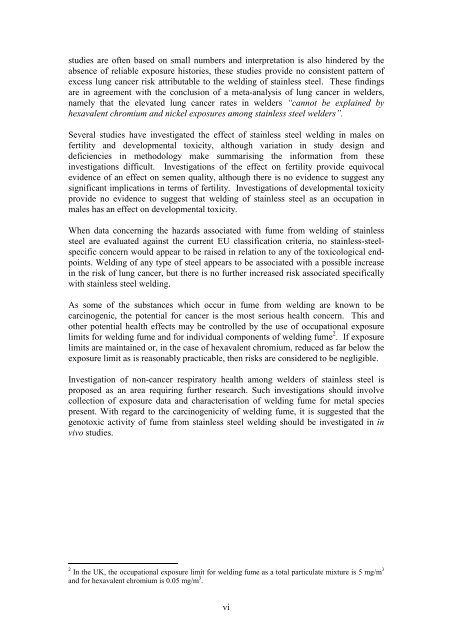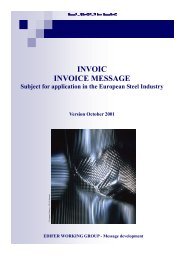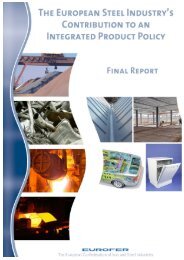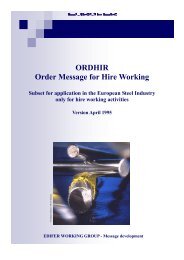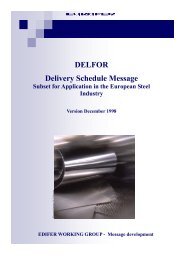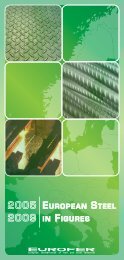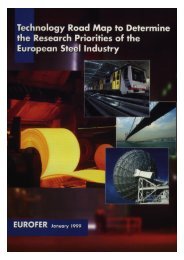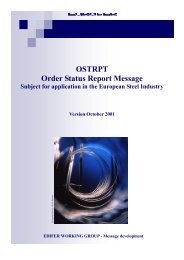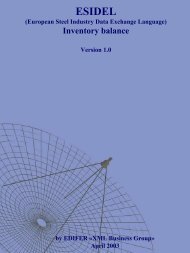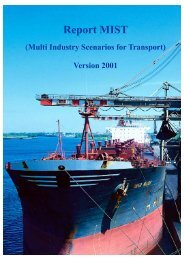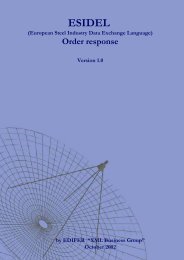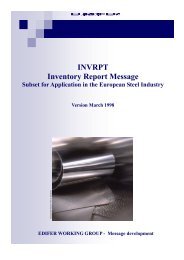manufacture, processing and use of stainless steel - International ...
manufacture, processing and use of stainless steel - International ...
manufacture, processing and use of stainless steel - International ...
You also want an ePaper? Increase the reach of your titles
YUMPU automatically turns print PDFs into web optimized ePapers that Google loves.
studies are <strong>of</strong>ten based on small numbers <strong>and</strong> interpretation is also hindered by the<br />
absence <strong>of</strong> reliable exposure histories, these studies provide no consistent pattern <strong>of</strong><br />
excess lung cancer risk attributable to the welding <strong>of</strong> <strong>stainless</strong> <strong>steel</strong>. These findings<br />
are in agreement with the conclusion <strong>of</strong> a meta-analysis <strong>of</strong> lung cancer in welders,<br />
namely that the elevated lung cancer rates in welders “cannot be explained by<br />
hexavalent chromium <strong>and</strong> nickel exposures among <strong>stainless</strong> <strong>steel</strong> welders”.<br />
Several studies have investigated the effect <strong>of</strong> <strong>stainless</strong> <strong>steel</strong> welding in males on<br />
fertility <strong>and</strong> developmental toxicity, although variation in study design <strong>and</strong><br />
deficiencies in methodology make summarising the information from these<br />
investigations difficult. Investigations <strong>of</strong> the effect on fertility provide equivocal<br />
evidence <strong>of</strong> an effect on semen quality, although there is no evidence to suggest any<br />
significant implications in terms <strong>of</strong> fertility. Investigations <strong>of</strong> developmental toxicity<br />
provide no evidence to suggest that welding <strong>of</strong> <strong>stainless</strong> <strong>steel</strong> as an occupation in<br />
males has an effect on developmental toxicity.<br />
When data concerning the hazards associated with fume from welding <strong>of</strong> <strong>stainless</strong><br />
<strong>steel</strong> are evaluated against the current EU classification criteria, no <strong>stainless</strong>-<strong>steel</strong>specific<br />
concern would appear to be raised in relation to any <strong>of</strong> the toxicological endpoints.<br />
Welding <strong>of</strong> any type <strong>of</strong> <strong>steel</strong> appears to be associated with a possible increase<br />
in the risk <strong>of</strong> lung cancer, but there is no further increased risk associated specifically<br />
with <strong>stainless</strong> <strong>steel</strong> welding.<br />
As some <strong>of</strong> the substances which occur in fume from welding are known to be<br />
carcinogenic, the potential for cancer is the most serious health concern. This <strong>and</strong><br />
other potential health effects may be controlled by the <strong>use</strong> <strong>of</strong> occupational exposure<br />
limits for welding fume <strong>and</strong> for individual components <strong>of</strong> welding fume 2 . If exposure<br />
limits are maintained or, in the case <strong>of</strong> hexavalent chromium, reduced as far below the<br />
exposure limit as is reasonably practicable, then risks are considered to be negligible.<br />
Investigation <strong>of</strong> non-cancer respiratory health among welders <strong>of</strong> <strong>stainless</strong> <strong>steel</strong> is<br />
proposed as an area requiring further research. Such investigations should involve<br />
collection <strong>of</strong> exposure data <strong>and</strong> characterisation <strong>of</strong> welding fume for metal species<br />
present. With regard to the carcinogenicity <strong>of</strong> welding fume, it is suggested that the<br />
genotoxic activity <strong>of</strong> fume from <strong>stainless</strong> <strong>steel</strong> welding should be investigated in in<br />
vivo studies.<br />
2 3<br />
In the UK, the occupational exposure limit for welding fume as a total particulate mixture is 5 mg/m<br />
<strong>and</strong> for hexavalent chromium is 0.05 mg/m 3 .<br />
vi


